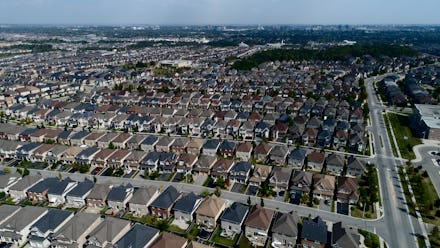Working from home might not be as good for the planet as we originally thought

When the coronavirus pandemic hit and much of the world locked down, it seemed like it might change the way we think about work. For many, opportunities to work from home became more viable, and it appeared that the massive drop in emissions from commutes and large office buildings would help address climate change.
That turned out to be wishful thinking. And what's more, working from home has additional, previously unaccounted for environmental costs, according to CBS. Citing Mike Berners-Lee, a carbon footprinting expert and the author of There is No Planet B, CBS found that the additional use of communication technology like Zoom and Slack is likely to increase our carbon footprint. The unexpected emissions are on the rise thanks to the newfound focus on remote work, which relies heavily on massive, resource-sucking servers to support things like video conferencing and emails.
"We estimate the whole of information communication technology is probably responsible for somewhere between two percent and four percent of the whole world's carbon footprint. And that's a big deal and it's becoming a bigger deal," Berners-Lee told CBS.
This isn't to suggest that switching to work-from-home is worse than office arrangements. Going digital does typically cut down on the overall impact to the planet. For example, an email consumes less than two percent of the energy that is required to deliver a paper letter, Berners-Lee said. But the ease of sending out multiple emails makes it much more likely that the average person will send more messages, eating away at the benefits with each click of the "Send" button.
That's before accounting for storing all of those communications, attachments, and other data that are required to work from home. Server farms that run constantly to keep us all connected can have a surprising impact on the planet. A study conducted in 2015 found data centers are responsible for about 2 percent of global greenhouse gas emissions. That's about the same amount of emissions produced by the aviation industry.
On top of the server costs, working from home adds new burdens to the power grid. Energy demand during the day has shifted from office buildings and other businesses to individual homes. That means houses that would normally be stagnant during the day are now demanding power for heating, lighting, and powering computers and other energy-gobbling technology. Earlier this year, a report published in the journal Nature found that while lockdowns in response to the coronavirus pandemic led to a dramatic short term drop off in emissions, there was one sector that saw energy consumption increase: residential areas. They saw a three percent increase in electricity demand, attributed to more people staying in and many folks turning their homes into their offices.
Working from home still certainly has its benefits, but it's not a panacea for addressing climate change. We are still affecting the planet each time we fire up our laptops and log in to the day's Zoom meeting. It might not be as bad as driving into the office every day, but until we embrace clean energy in a meaningful way, we'll still be harming the planet from our couches.